

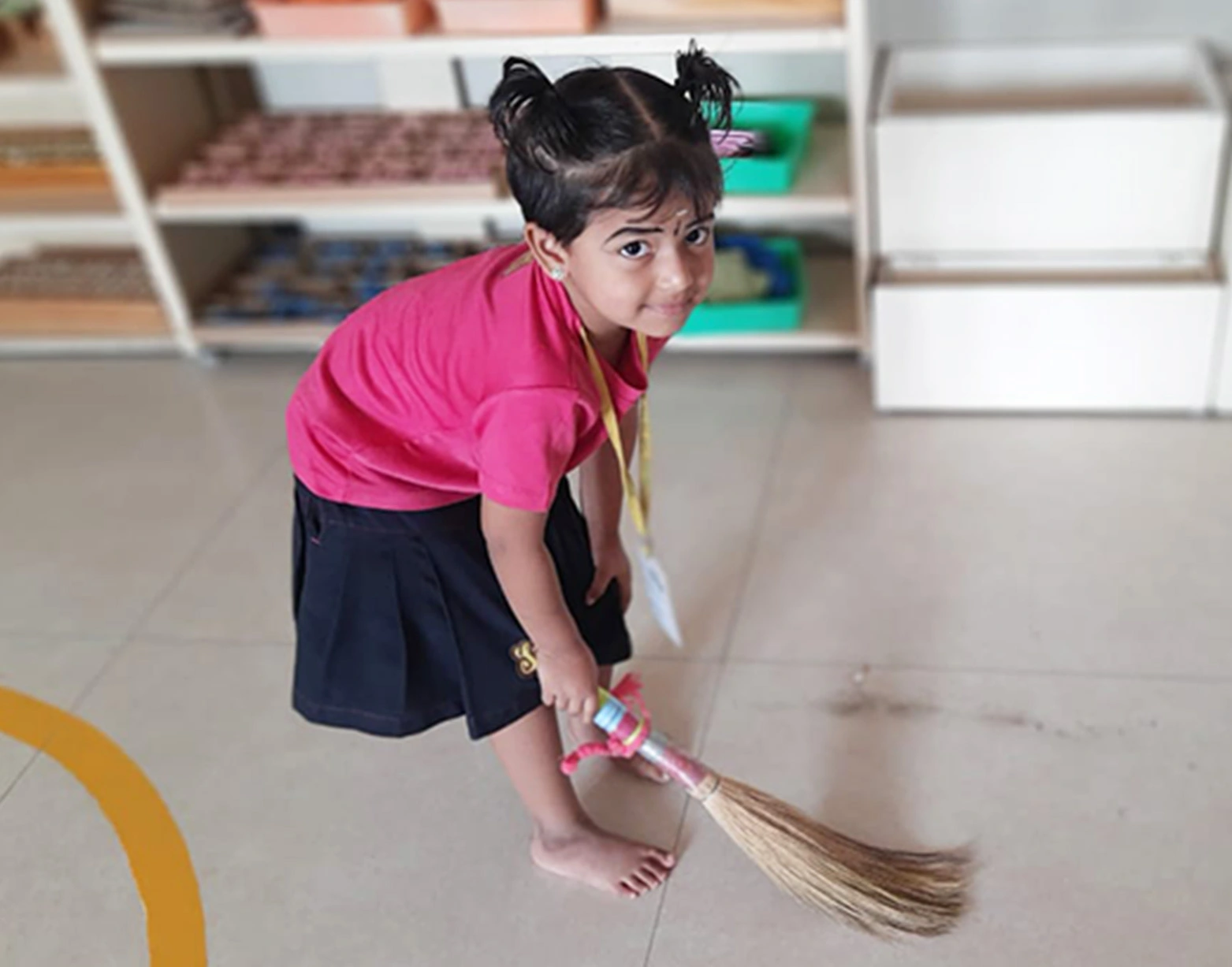
These are Exercises for the child to learn to do living activities in a purposeful way. The Exercises of Practical Life are formative activities, a work of adaptation to the environment. Such adaptation to the environment and efficient functioning therein is the very essence of useful education.
We adults, feel really happy and wonder when children imitate our daily activities. Though it seems easy for us to do these activities, for the child it is wondrous, are new discoveries and engaging, joyous challenges. This includes the everyday routines and practices of life: preparing food, dressing oneself, cleaning, habitual courtesies, and more - these are for the child new, maybe daunting, exciting tasks that are visibly part of the human world and that are empowering to master.
One of the hallmarks of the Montessori Method is that it takes full advantage of the child’s motivation to learn these things at a very young age. The practical life curriculum in Montessori provides a scope and sequence for these everyday routines and practices. And exactly like the other academic areas in the Montessori classroom, the Montessori approach offers a pedagogy that elevates and empowers the child in her pursuit of these skills. Practical life activities in Montessori are purposeful activities, develop motor control and coordination, and develop independence, concentration, and a sense of responsibility.
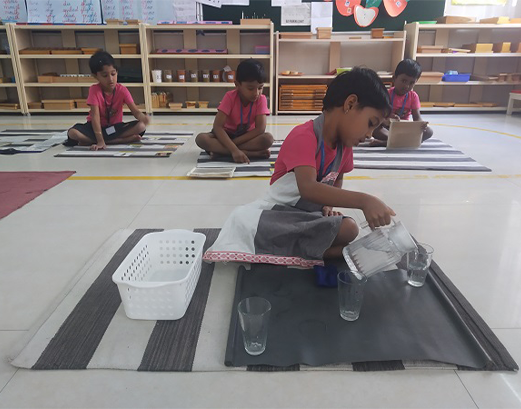
Practical life activities are applicable for all ages, even infants, and change depending on what the child can do at each stage of development. The activities can start with something as simple as pulling pants up or washing hands and can get as complicated as baking a dessert, or even developing a business plan in the elementary or middle school years.
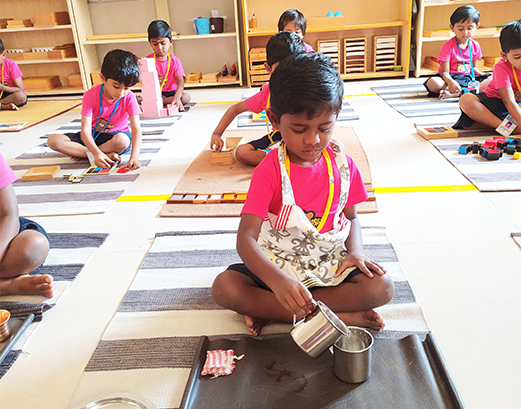
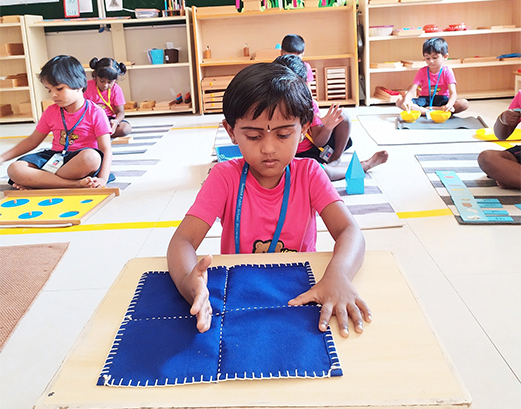
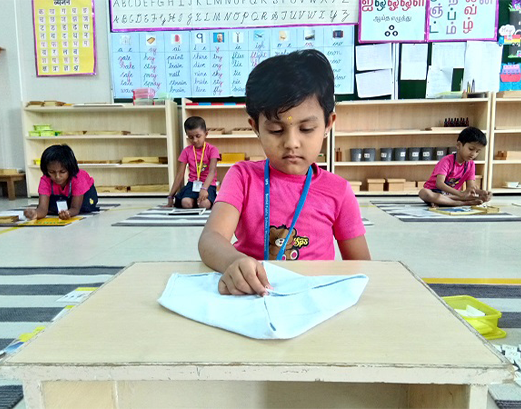
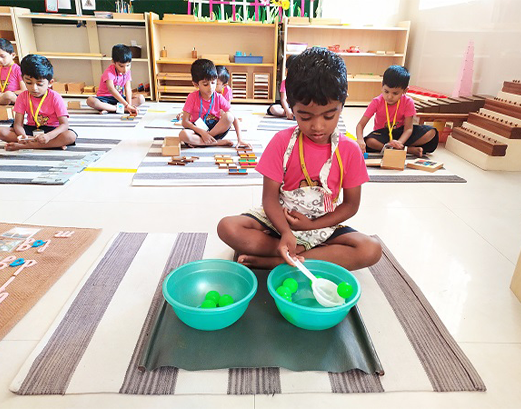
When taken seriously and presented as an approachable, impactful challenge, these activities hold inherent dignity. It’s not "just" getting dressed or "just" pouring water from a jug if one is doing it oneself. The child is learning to follow a complex motor sequence, independently, in order to fulfil his or her own desires and needs. These skills, when taught early in life, allow children to believe in themselves as well as develop the self-discipline needed for success throughout their lives.
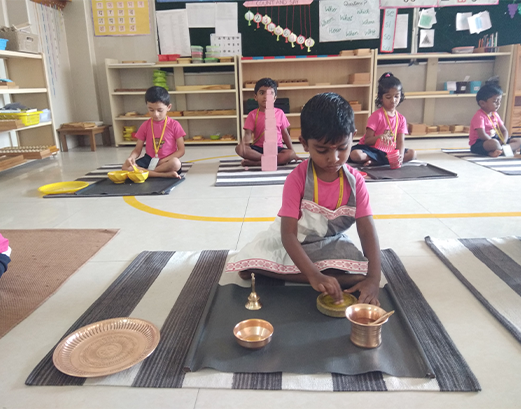
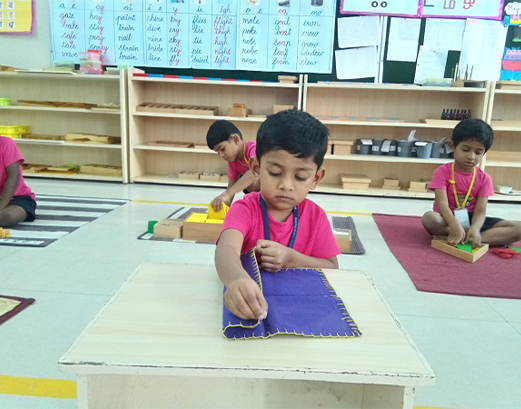
Those who are unfamiliar with the Montessori method may question why a child is doing something like washing the tables over learning something more academic like mathematical concepts. The practical life Montessori curriculum teaches the children things they need to (and are motivated to) learn anyway, and does it in a way that is of piece with the more academic disciplines, developing the same key fundamental executive and emotional skills. Math, reading, and language all require one to have the ability to focus, to be able to follow logical and sequential steps, make intelligent choices, see a task through from start to finish, persist when one makes a mistake, and correct one’s mistakes - and all of these are present in the process of learning and practicing the practical life activities.
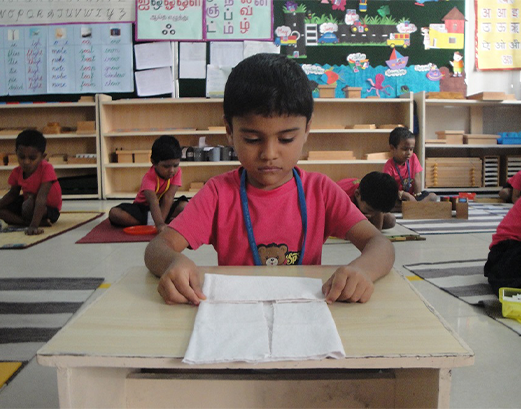
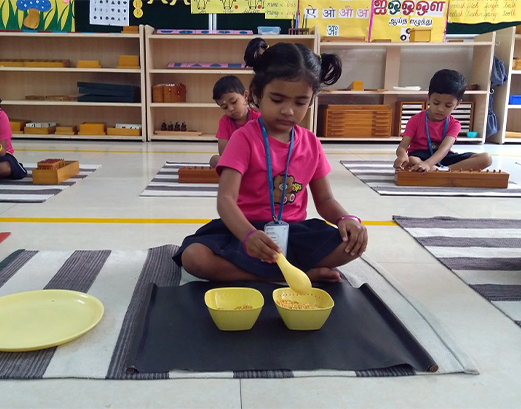
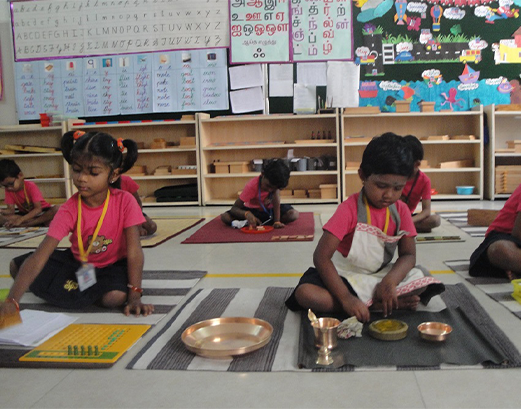
The child arrives at the school and has already seen the Elementary Movements performed countless times at home by her family, but performed inconsistently, hurriedly and whilst many other activities are happening. The performance of Elementary Movements by the teacher gives the opportunity for the child to watch precisely what is happening, perfect the movements for herself and in doing so develop self-mastery and adaption to her environment. All elements of Practical Life: Grace and Courtesy, Care for the Environment and Care for Oneself require the performance of complex tasks. To build a child’s co-ordination, and confidence and for her to orient herself to this way of learning, Elementary Movements are given.
These activities provide the means for children to become physically independent. Activities in this area may include learning to wash one’s hands or learning to put on one’s clothing.
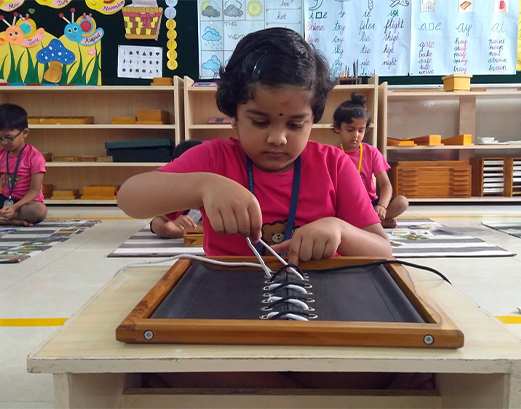
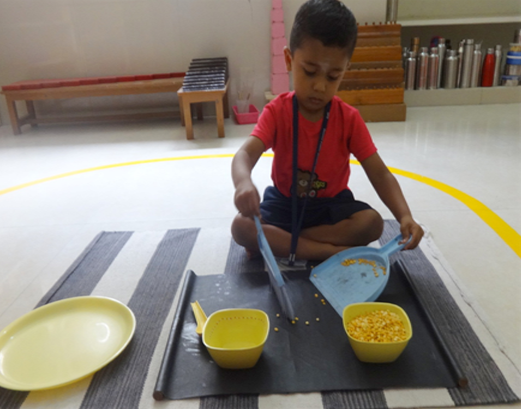
Keeping a clean, orderly classroom is important in a Montessori environment. The practical life activities teach children how to take care of the space around them—from physically cleaning to, on a deeper level, appreciating one’s environment. These activities may include how to set the shelves, how to clean the room, or how to water and care for plants. For example, in the Montessori table washing activity, the child would be shown how to go to the correct area of the room to gather cleaning supplies, take a pitcher to the sink and fill it with water, and then methodically scrub the table. Not only is it beautiful, but they get to make choices about what will make it the most beautiful, all while performing a very involved sequence of tasks with a naturally mandatory order
Developing the social skills of grace and courtesy is a key component of the Montessori curriculum. In a Montessori environment, children learn how to interact appropriately with each other and with adults through dialogue. Some of these interactions include greeting and hosting guests into the classroom, preparing and sharing snacks with peers, and exercising appropriate mealtime behavior. One of the main values that are taught in a Montessori classroom is respect. By teaching respect for their peers, materials, and themselves, Montessori educators plant a seed of compassion and empathy in the children.
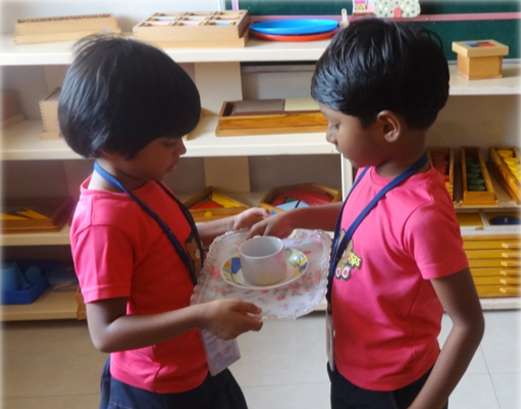
There are multiple layers to these activities! They may seem straightforward and repetitive, but a lot is going on under the surface.
First, for children, these activities are complicated, multi-step processes that pave the way for a problem-solving mind-set and a fulfilling experience. But second, there are often subtle curricular integrations within these tasks. Washing a table has an immediate purpose because the child is learning to clean up after herself - but there’s also an indirect purpose because the child learns to wash, in a Montessori classroom, from left to right, and then top to bottom, thus habituating motor control and attention in the direction of English reading and writing.
In doing practical life activities, the child can develop a high level of concentration, develop a sense of order, take pride in completing a job, increase independence, develop respect for his or her community and surroundings, and improve fine motor skills - both in general and with an eye to the particular skills that a child will need for more cognitively demanding work such as reading, writing, and mathematics.
Practical life activities should be taken seriously as children are working diligently to perfect and master specific skills. This fundamental range of work has many layers of purpose that include joyously earning mastery over the "mundane," as well as constructing and practicing core human faculties.
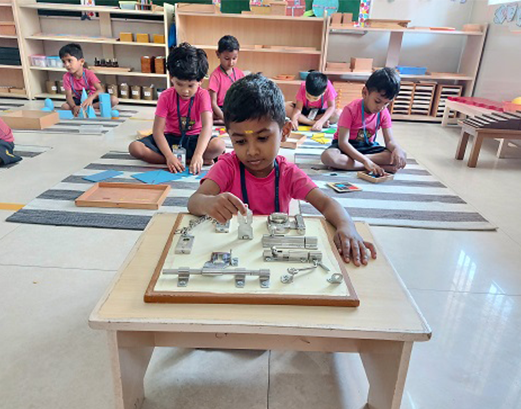
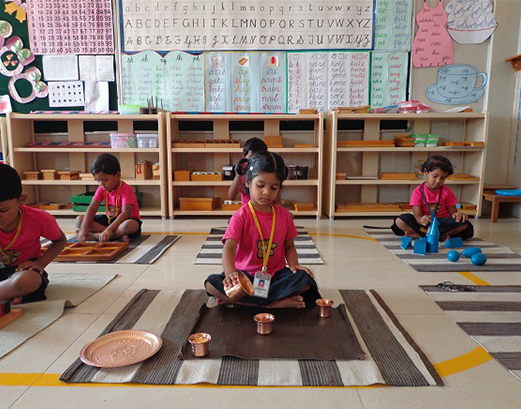
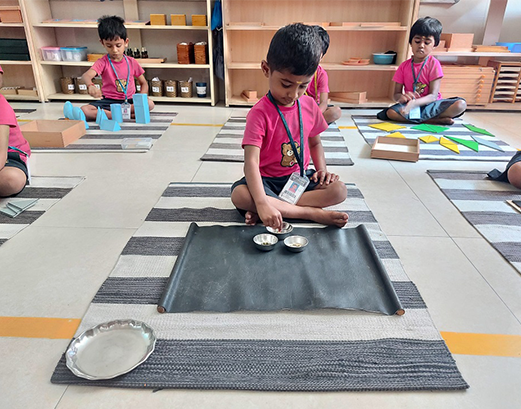
2023 senthil public school dharmapuri. all rights reserved. designed by aatmia.